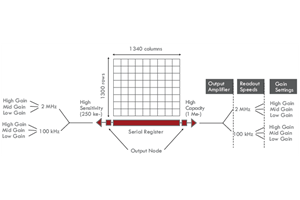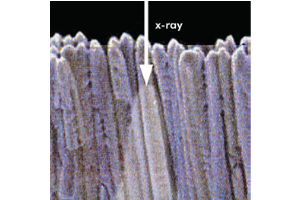Flexible Electronic Architecture Extends Utility of Scientific Cameras

Ultimately, the true worth of a scientific camera is determined by its ability to flexibly meet the performance requirements deemed most useful by a given researcher. As many disciplines have continued to evolve over recent years to encompass more varied investigatory techniques, sets of critical requirements have also expanded. When seeking a scientific camera to satisfy diverse needs, one must be sure to look for the most versatile, highest performance solutions available…Read Full Article
Utilizing Fiberoptics for Indirect Detection of X-rays
Quite often, users of indirect-detection systems assume that the camera manufacturer has carefully selected the ideal combination of sensor, fiberoptic (faceplate/taper) and phosphor to preserve image quality. Unfortunately, each application requires different parameters, and it is difficult for a manufacturer to know every requirement. Therefore, it is imperative that each customer understands the component options available to obtain optimal performance.…Read Full Article

Utilizing Phosphors for Indirect Detection of X-rays

Teledyne Princeton Instruments has developed two types of phosphors for x-ray imaging applications in the energy range between 5 keV and 50 keV. The Gd2O2S:Tb is recommended for x-ray energies <33 keV due to its higher absorption efficiency, while the CsI:Tl is recommended where higher resolution is required….Read Full Article
